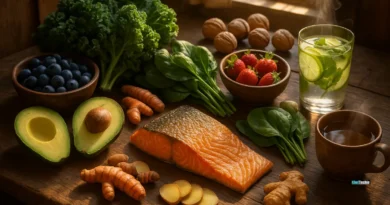7 Rhubarb Benefits You Need to Know in 2025 Myths Busted!
Why Rhubarb Deserves a Spot in Your 2025 Wellness Plan!
Let’s be honest, when most people hear rhubarb, they think of sweet, tangy pies and jams. But here’s the truth, rhubarb is more than just a dessert ingredient. In an era where wellness trends come and go, rhubarb stands out as a time-tested, nutrient-rich powerhouse. Often overshadowed by flashier superfoods, this tart stalk is making a significant comeback in 2025, thanks to its impressive health benefits and versatility in the kitchen.
Whether you’re aiming to boost your bone health, improve digestion, or simply add a new flavor to your meals, rhubarb offers a natural solution. In this article, we’ll explore 7 science-backed rhubarb benefits that are trending in 2025, bust common myths, and answer real questions from people like you who want to make smarter food choices.
Also read – Best Plant-Based Protein Sources
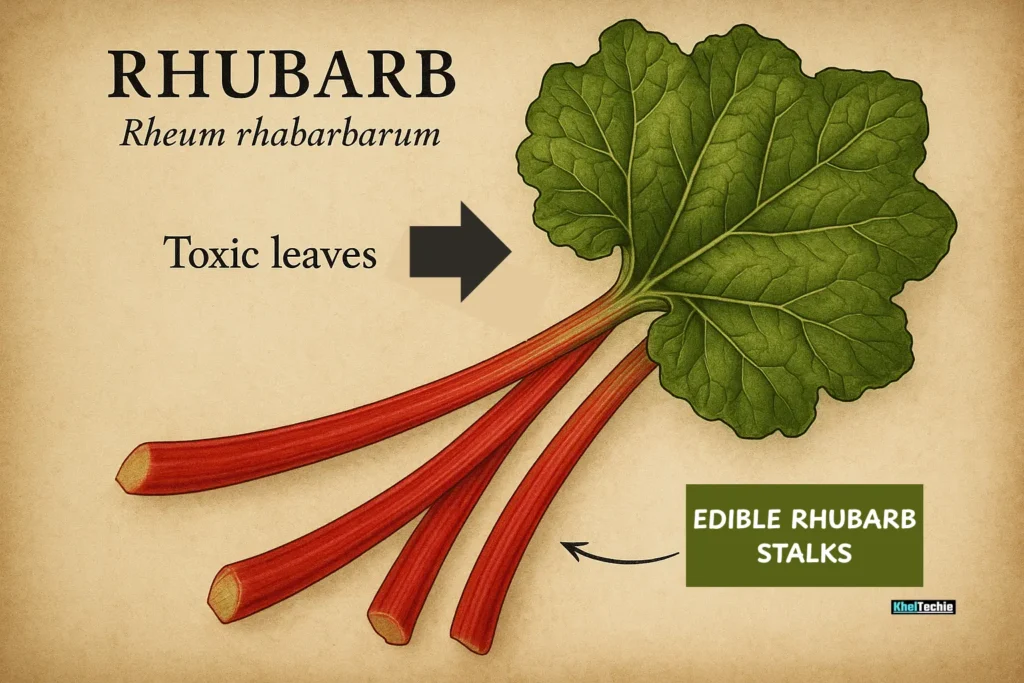
What Is Rhubarb?
Rhubarb (scientific name: Rheum rhabarbarum) is a perennial plant with thick, red stalks and large green leaves. While the stalks are edible and used in cooking, the leaves contain toxic levels of oxalic acid and should never be consumed.
Think of rhubarb like nature’s tart candy, sour, crisp, and surprisingly nutritious. It’s often mistaken for a fruit, but botanically speaking, it’s a vegetable.

Why Rhubarb Matters in 2025
With rising interest in plant-based diets, functional foods, and gut health, rhubarb is gaining traction among nutritionists and holistic health experts. According to recent studies, rhubarb is stepping into the spotlight in 2025 as a science-backed superfood. Most people still think of rhubarb as something you toss into a pie but researchers now say it could help tackle serious health issues like obesity, prediabetes, and even cognitive decline.
According to a breakthrough study published on the NIH website, rhubarb root extract helped prevent fat buildup and improved glucose metabolism, even when the subjects were fed a high-fat diet. That’s a big deal for anyone struggling with weight gain or insulin resistance. And you don’t need to be a scientist to understand the takeaway, rhubarb works with your body, not against it.
What’s more, according to Health.com, rhubarb is loaded with anthocyanins, antioxidants that protect your brain from aging and memory loss. As Alzheimer’s continues to affect millions, adding a natural brain-booster like rhubarb to your diet is a smart, preventative step.
So in 2025, rhubarb isn’t just a trendy kitchen ingredient, it’s a science-approved health ally. Whether you’re into smoothies, stews, or baked goods, rhubarb deserves a front-row spot in your wellness routine.
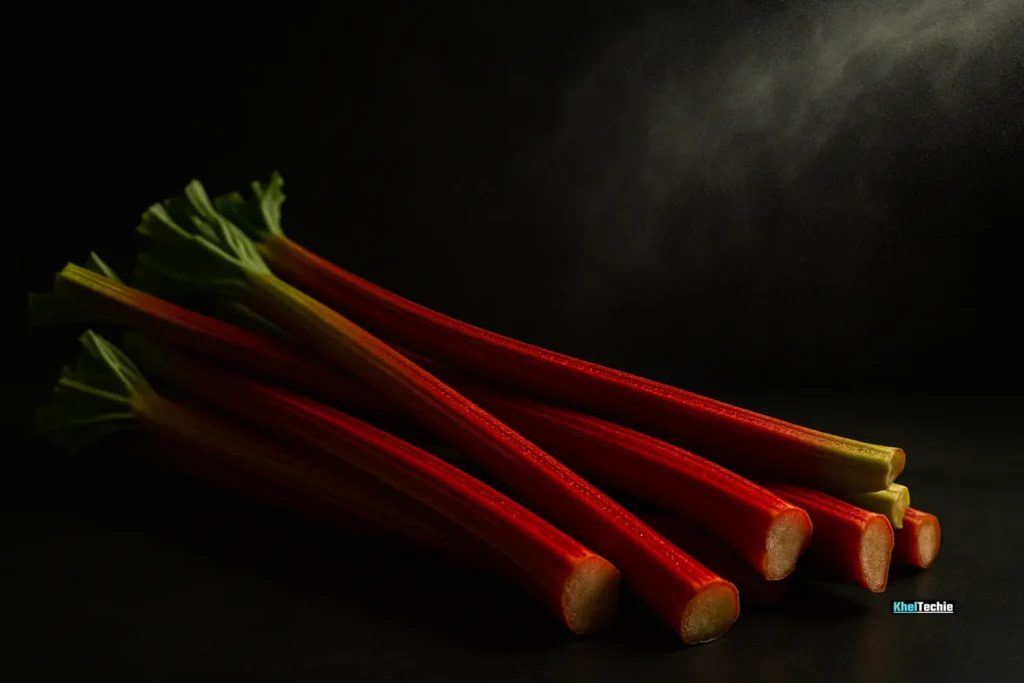
The 7 Rhubarb Benefits You Need to Know in 2025
Let’s dive into the top seven scientifically backed benefits of rhubarb that can improve your health and well-being.

1. Strengthens Bone Health
Rhubarb is a powerhouse when it comes to bone health, primarily due to its high Vitamin K1 content. Vitamin K1 plays a crucial role in bone mineralization by activating osteocalcin, a protein that binds calcium to the bone matrix, thereby enhancing bone strength and reducing the risk of fractures and osteoporosis.
Incorporating rhubarb into your diet can be a delicious way to support your skeletal system. However, it’s important to note that rhubarb also contains oxalates, which can bind to calcium and potentially reduce its absorption. To mitigate this, pairing rhubarb with calcium-rich foods like dairy products can be beneficial.
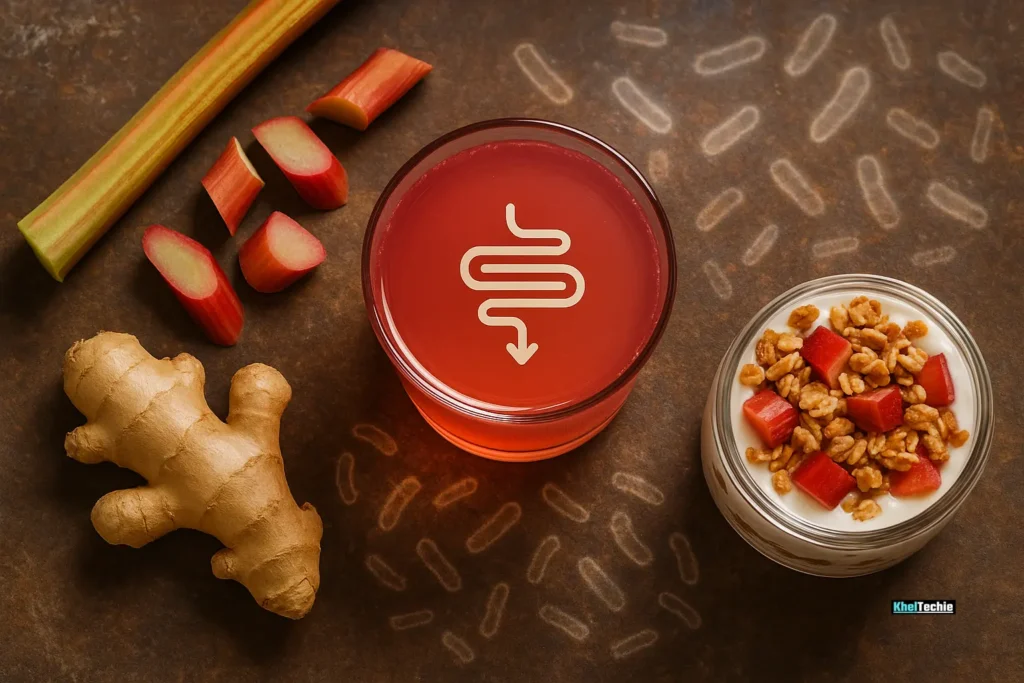
2. Aids Digestive Health
Rhubarb has been traditionally used to alleviate digestive issues, thanks to its natural compounds called anthraquinones. These compounds have a mild laxative effect, stimulating bowel movements and helping to relieve constipation.
Additionally, rhubarb is rich in dietary fiber, which promotes a healthy gut microbiome by feeding beneficial bacteria. This not only aids in digestion but also supports overall gastrointestinal health. Incorporating rhubarb into your meals can be a natural way to maintain regularity and digestive comfort.
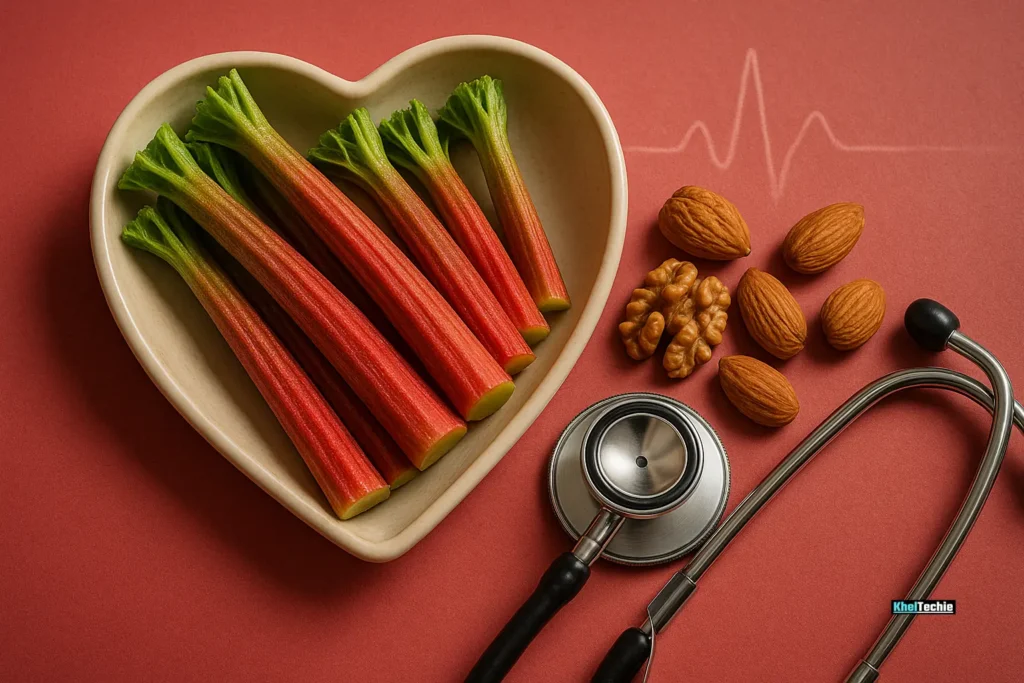
3. Supports Heart Health
Regular consumption of rhubarb has been linked to improved heart health. A study published in PubMed found that participants who consumed rhubarb stalk fiber experienced an 8% reduction in total cholesterol and a 9% decrease in LDL (bad) cholesterol levels.
Moreover, rhubarb is a good source of potassium, a mineral that helps regulate blood pressure by relaxing blood vessels and promoting healthy circulation. Including rhubarb in your diet can be a heart-friendly choice.
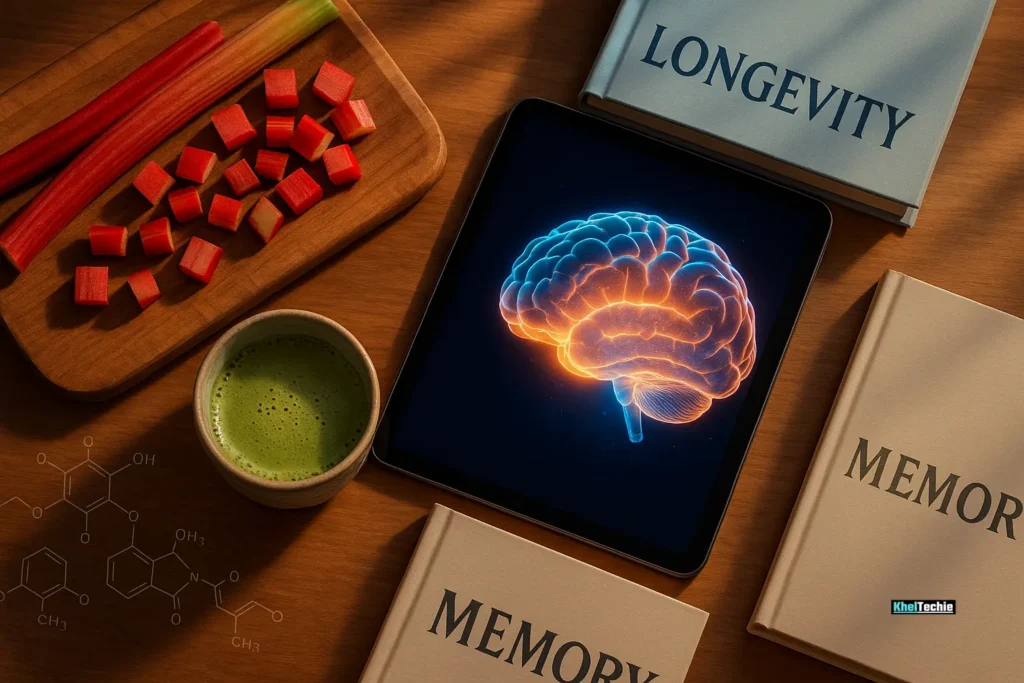
4. Enhances Cognitive Function
Rhubarb is rich in antioxidants, particularly anthocyanins, which combat oxidative stress, a key factor in cognitive decline. These compounds help protect brain cells from damage and may reduce the risk of neurodegenerative diseases such as Alzheimer’s.
Incorporating rhubarb into your diet can be a tasty way to support brain health and maintain cognitive function as you age.

5. Boosts Immune System
Packed with Vitamin C and other antioxidants, rhubarb strengthens the immune system by neutralizing harmful free radicals. Its anti-inflammatory properties further support immune health, helping the body fend off infections and illnesses more effectively.
Including rhubarb in your meals can contribute to a robust immune response and overall well-being.

6. Promotes Healthy Skin
The antioxidants in rhubarb not only benefit internal health but also contribute to radiant skin. By combating oxidative stress, these compounds help prevent premature aging, reduce inflammation, and promote a clear complexion.
Incorporating rhubarb into your diet can be a natural way to support skin health and achieve a healthy glow.

7. Aids in Weight Management
Low in calories yet high in fiber, rhubarb can be a valuable addition to a weight management plan. Its fiber content promotes satiety, helping you feel full longer and potentially reducing overall calorie intake. Additionally, rhubarb contains compounds that may support fat metabolism.
Incorporating rhubarb into your meals can be a flavorful and nutritious strategy for maintaining a healthy weight.

Common Mistakes to Avoid When Eating Rhubarb
To get the most out of rhubarb while staying safe, avoid these common pitfalls:
❌ Eating the leaves – They contain oxalic acid, which is toxic. Always discard them
❌ Overloading on sugar – Ruins the health benefits; opt for natural sweeteners like honey or maple syrup.
❌ Cooking in aluminum pans – Acidic rhubarb reacts with aluminum, leaching harmful metals.
❌ Consuming excessive amounts – Can cause kidney stones due to high oxalate content.
❌ Ignoring allergies – Some people may experience allergic reactions; stop immediately if symptoms occur.

How to Use Rhubarb for Maximum Health Benefits
Ready to start reaping the rewards of rhubarb? Here’s how to incorporate it into your life safely and deliciously.
Step 1: Choose Fresh, Firm Stalks
Look for bright red or pink stalks, they’re usually sweeter. Avoid limp or discolored ones.
Step 2: Wash and Trim Properly
Cut off both ends and rinse thoroughly. No need to peel unless the stalks are very fibrous.
Step 3: Cook Smart
Use a stainless steel or glass pot. Add a splash of water and simmer until tender. For extra flavor, add a pinch of cinnamon or ginger.
Step 4: Store Correctly
Keep fresh rhubarb in the fridge wrapped in a damp towel for up to a week. Freeze chopped stalks for longer storage.
Step 5: Enjoy Daily
Try these ideas:
- Add to smoothies or oatmeal
- Make homemade rhubarb sauce
- Toss into salads with goat cheese and walnuts
- Bake into muffins or pancakes (use minimal sugar)
Also read – Coriander health benefits diet
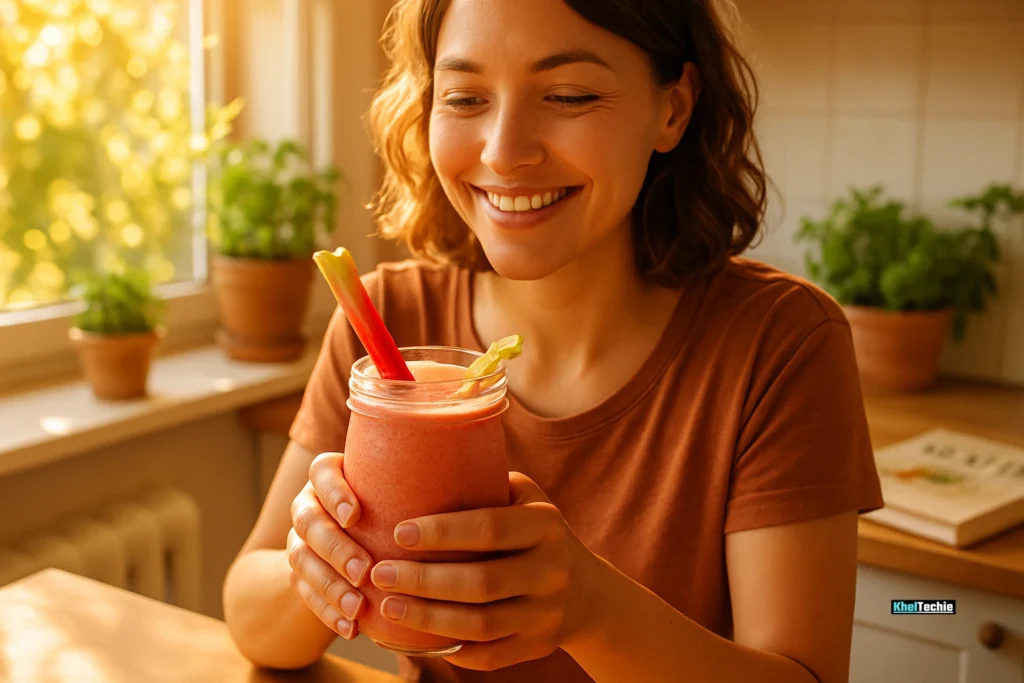
Final Thoughts: Embrace Rhubarb for Better Health
As we move deeper into 2025, food trends are shifting toward natural, nutrient-rich ingredients that offer real health benefits. Rhubarb fits the bill perfectly, it’s versatile, affordable, and loaded with goodness. Whether you’re aiming to improve digestion, manage weight, or simply eat cleaner, rhubarb deserves a spot in your weekly meal plan. So next time you see those ruby-red stalks at the market, grab a bunch and give them a try. Your body and taste buds will thank you.
Share Your Rhubarb Story! Have you tried rhubarb before? Did it surprise you? Let us know in the comments below and don’t forget to share this article with anyone curious about this powerhouse plant!
Note: Always consult with a healthcare professional before making significant changes to your diet or starting new supplements.
FAQs
Is rhubarb a fruit or a vegetable?
Botanically, rhubarb is a vegetable, but it’s often used as a fruit in culinary contexts due to its tart flavor.
Can I eat rhubarb raw?
Yes, but its tartness may be off-putting. Cooking rhubarb softens its texture and mellows its flavor.
How can I incorporate rhubarb into my diet?
Rhubarb can be used in pies, jams, sauces, and even savory dishes. Pairing it with strawberries is a classic combination
Is Rhubarb a Superfood?
While not officially classified, rhubarb qualifies as a nutrient-dense, antioxidant-rich food, earning it ‘superfood, status among health enthusiasts.
Is Rhubarb Good for Weight Loss?
Yes! Rhubarb is low in calories, high in fiber, and keeps you full longer. Just avoid adding too much sugar.
Can Diabetics Eat Rhubarb?
In moderation, Some studies show it may help regulate blood sugar, but always consult your doctor.
Does Rhubarb Help Digestion?
Absolutely, Its fiber and natural laxative compounds aid regularity. But don’t overdo it!
Is Rhubarb Safe During Pregnancy?
In moderate amounts, yes. However, always consult with a healthcare provider before making dietary changes during pregnancy.
Can Rhubarb Cause Kidney Stones?
Possibly, Rhubarb is high in oxalates, which can contribute to kidney stone formation in susceptible individuals.
Does Rhubarb Have Side Effects?
Overconsumption can lead to diarrhea, stomach cramps, or kidney issues. Stick to 1–2 servings per week.
Does cooking rhubarb reduce its nutritional value?
Cooking can reduce some vitamin content, but it also makes certain antioxidants more bioavailable.



